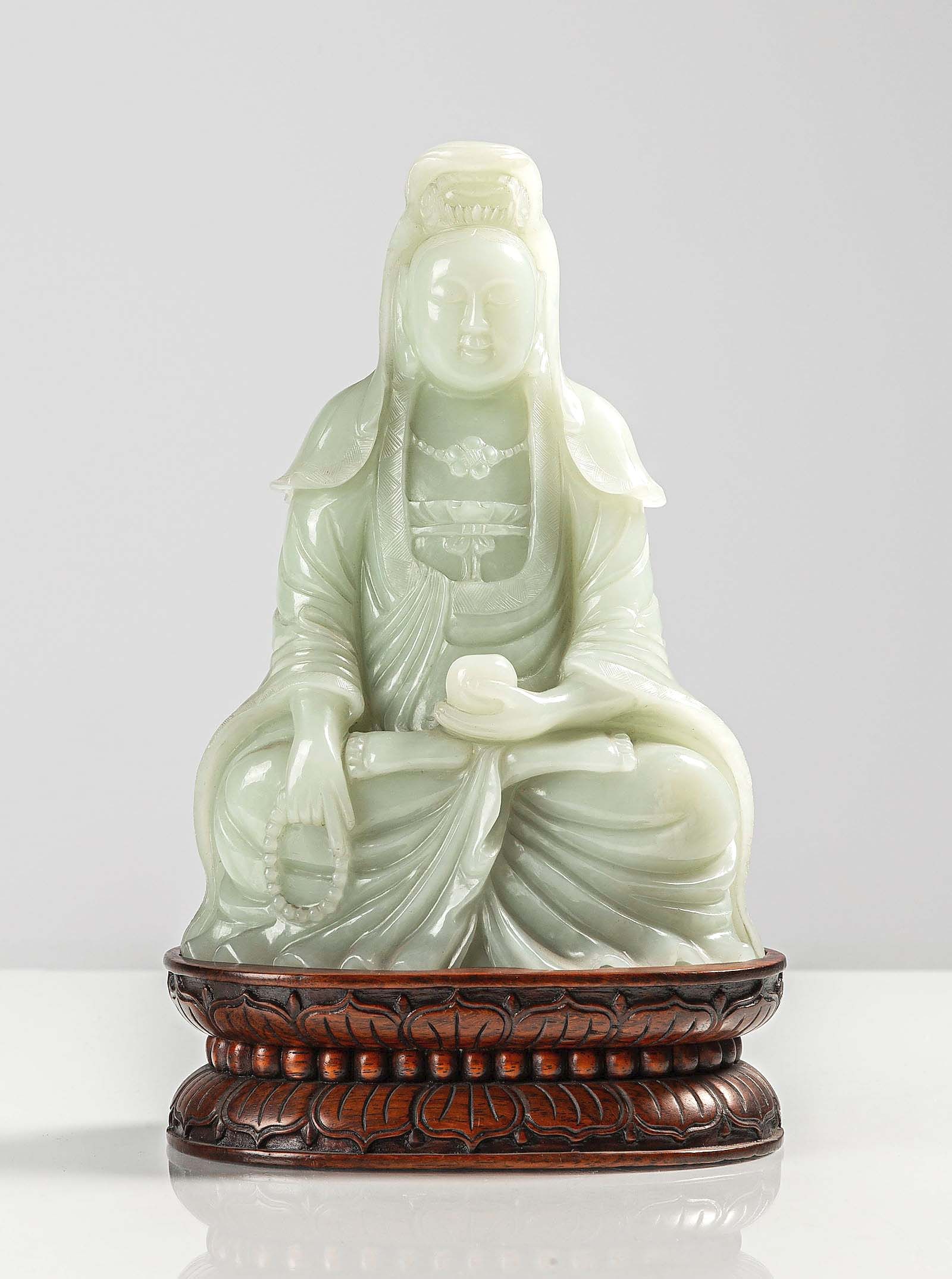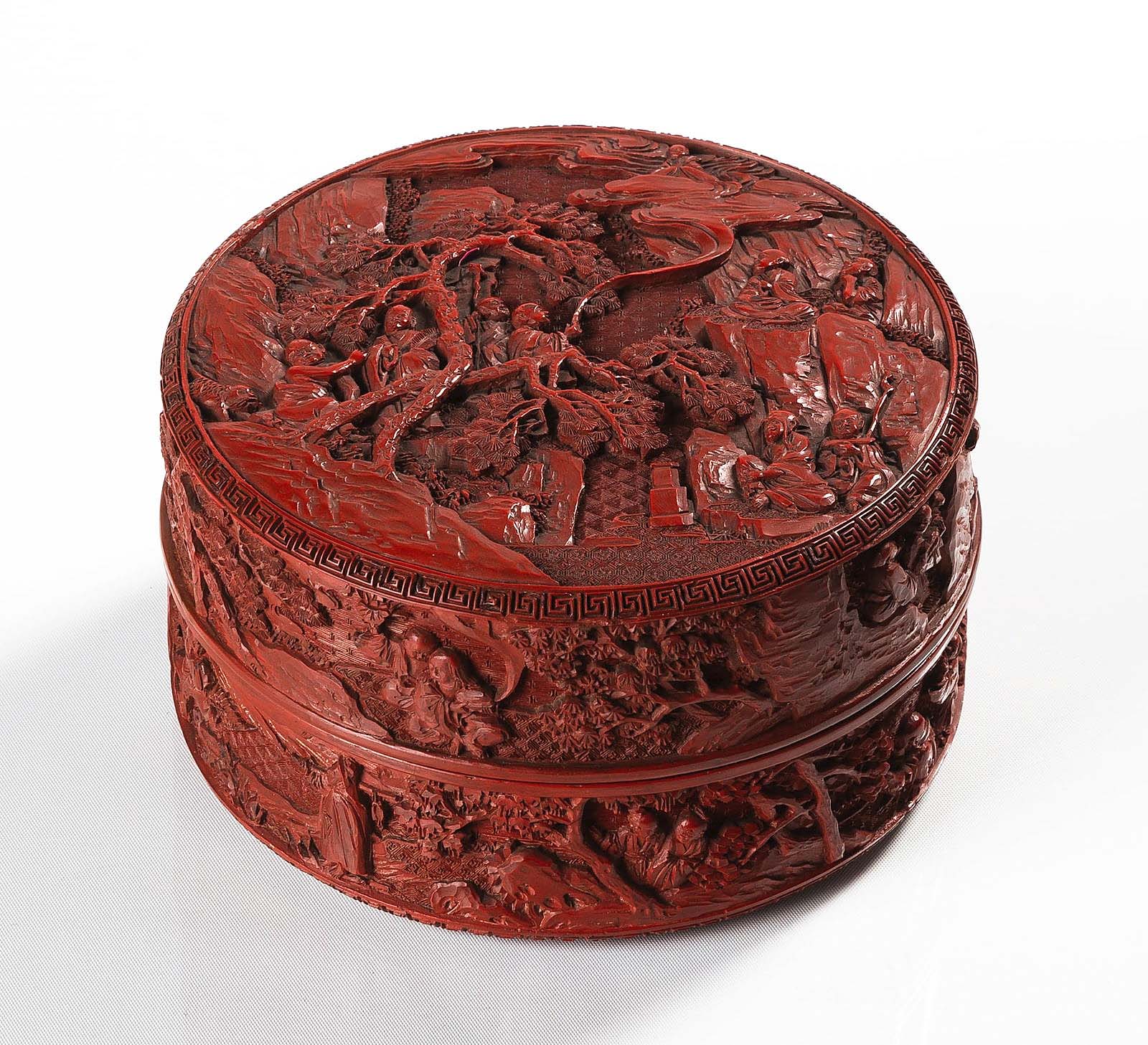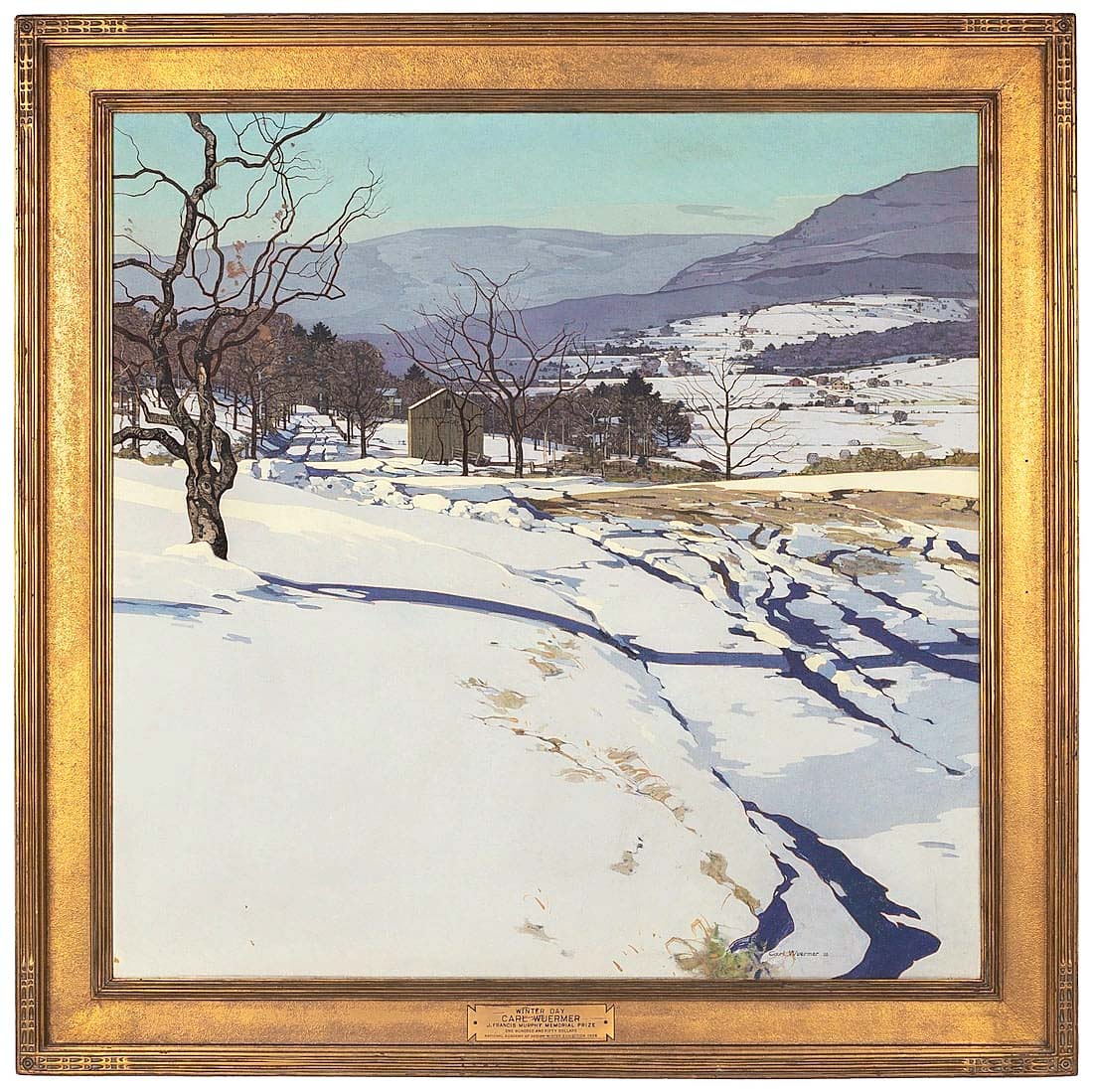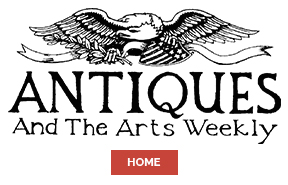
Sitting at $138,000, the highest price of the sale, was this white jade seated statuette of Guanyin from the Qianlong period on a carved wooden stand, 9½ inches high (including stand), which earned more than 11 times its high estimate ($8/12,000).
Review by Kiersten Busch
GENESEO, N.Y. — Cottone Auctions’ March 27 Fine Art & Antiques sale featured the estate of philanthropist, antiques collector and former president of the Oishei Children’s Hospital’s board of trustees, Sidonie Triepel William (Buffalo, N.Y.). The sale also featured various offerings of Tiffany lamps and accessories, ceramics, paintings, decorative arts, Chinese and Japanese art, estate silver, European and American clocks and timepieces, American furniture and a collection of Native American art and artifacts. The sale, which had a 90 percent sell-through rate, brought in $1.45 million. “We are very satisfied with the results overall,” reported marketing director Michael Parsons. “There was good interest in the sale and good participation.”
A Chinese white jade statuette of the bodhisattva of mercy and compassion, Guanyin, from the Qianlong period (1735-1796) sat at the highest price, earning $138,000 against its $8/12,000 estimate. The seated figure was in “hieratic posture” and was holding a rosary and a pearl, according to catalog notes. The statuette had provenance to an October 1943 Sotheby’s New York sale, the collection of John F. Triepel (1899-1985) and the William estate; it will now reside with a domestic private collector. A second jade figure of Guanyin, this one standing and from the Qing dynasty, achieved the second-highest price of the 13 lots of Chinese carved jade items offered, which also included various belt buckles, snuff bottles and amulets with prices ranging from $300-$5,400. It went out at $7,800.
Three lots of Chinese cinnabar crossed the block, led by a cinnabar lacquer scholar box and cover from the Qianlong dynasty. Cataloged as “fine and elaborately carved,” the 3-inch-high box opened for $30,000, just under four times the high end of its $5/8,000 estimate. The other cinnabar lots included two snuff bottles with Qianlong dynasty marks ($1,560) and two unmarked snuff bottles ($840).

From the Qianlong period, this “elaborately carved” Chinese cinnabar lacquer scholar box and cover, 3 inches high, earned an educated $30,000, much higher than its $5/8,000 estimate.
Of the 32 lots of Tiffany Studios items offered, 14 were lamps. A Tiffany blue Daffodil lamp consigned from a prominent American collection will light up a private collector’s home for $60,000. The circa 1905 lamp’s leaded glass shade had a cobalt blue top and background with “wonderfully molded” flowers. Another example of note was a Tiffany Pomegranate lamp with a rare base. The lamp had a dichroic glass shade, and a Moorish-influenced, bronze-mounted blown and decorated brown Favrile glass base. The catalog noted that a related example was illustrated in Tiffany at Auction by Alastair Duncan (New York City: Rizzoli, 1981). A domestic private collector bid the lamp to $48,000.
Five Tiffany Studios Favrile vases made a splash, led by a special-order example, which was blown and decorated in the early Twentieth Century. Filling up for $40,800, the pink, purple and orange marbled vase was engraved “O9178 Louis C. Tiffany” to its underside and will head to the home of a domestic private collector.
All but four of the 18 lots of fine art included in the sale were oil paintings. However, the highest priced work in the category, “Keyah Hozoni (Beautiful Land)” by Diné artist Emmi Whitehorse, was mixed media on paper, mounted on canvas. Dated “7/1987,” the painting earned a colorful $57,000. Whitehorse, born in Crowpoint, N.M., “brings together Navajo cosmological perspectives with abstraction in her work” and has described her work as “having a sense of chaos and randomness,” according to catalog notes. This particular painting was formerly held by LewAllen / Marilyn Butler Fine Art (Santa Fe) and a collection in Toronto, Canada.

With extensive exhibition history, “Winter Day” by Carl Wuermer (German/American, 1900-1981), 1928, oil on canvas, 36 by 36 inches in a Newcomb-Macklin frame, earned a chilly $16,200 ($5/8,000).
Bidders were drawn to oil paintings, however, such as Carl Wuermer’s “Winter Day,” which earned a chilling $13,500. Painted in 1928, the oil on canvas was in a Newcomb-Macklin frame and had extensive exhibition history at museums such as the Art Institute of Chicago and the National Academy of Design, New York, as well as the O’Brien Art Galleries in Chicago. The painting also won the J. Francis Murphy Memorial Prize at the Academy of Design, New York, in 1928.
“Winter Day” was one of nine landscapes that attracted bidders’ attention. The other eight ranged in price from $660 for Vernon Wood’s (American, 1923-1995) “Bucks County, Pennsylvania,” to $9,900 for “Keene Valley View, 1882” by Horace Wolcott Robbins, Jr.
The only artist with more than one painting offered in the sale was Orville Bulman, whose three oil on canvas and boards were led by an untitled jungle scene depicting a woman and two tigers which was picked up for $15,600 by a domestic private collector. “Apres Coup” and “La Cadeu” earned $12,000 and $11,400, respectively.
Clocks of all shapes and sizes ranged in price from $360 for a Waterbury advertising gallery clock to $36,000 for a monumental French ormolu and bronze Empire clock, which led the group of 46 that crossed the block. The latter, which will head off to an international collector, was made circa 1810 and depicted “Ceres teaching Triptolemus the art of sowing corn,” according to catalog notes. The red griotte marble base contained a porcelain dial signed “Maniere a Paris” and the bronze work on the clock was attributed to Philippe Thomire (1751-1843) and Charles-Guillaume Manière (1778-1812).
Cottone’s next auction is scheduled for May, with a specific date forthcoming. Prices quoted include buyer’s premium, as reported by the auction house. For information, 585-243-1000 or www.cottoneauctions.com.
















